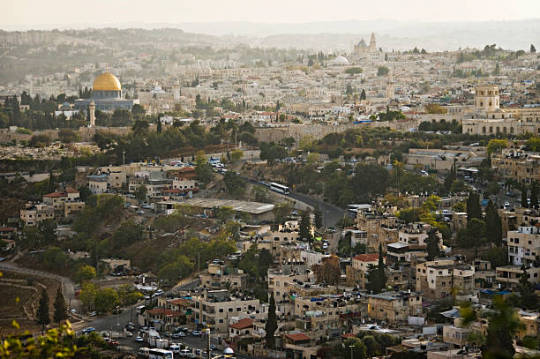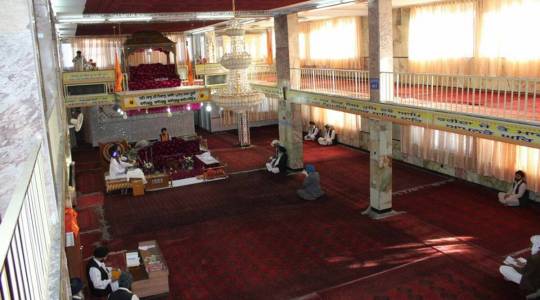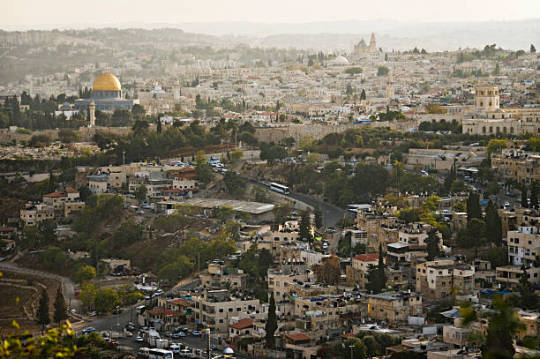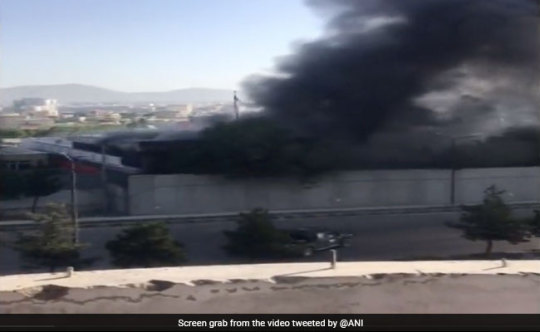#gurdwara attacked in kabul afghanistan
Text
Stop Doing This In Kabul
Stop Doing This In Kabul
BEST ACCOMMODATION DEALS IN KABUL HERE
GET TO KNOW THE CITY
Kabul is the capital and largest city in Afghanistan. It has a population of around 4.6 million people and is divided into 22 districts. Its rapid urbanization makes it the world’s 75th largest city.
Kabul is located in a valley between the Hindu Kush Mountains and the Kabul River, making it one of the world’s highest capital cities.…

View On WordPress
#afganistan women protest in kabul#afghanistan kabul news#gurdwara attacked in kabul#gurdwara attacked in kabul afghanistan#gurudwara attacked in kabul#isis suicide bombs at kabul#kabul#kabul (city/town/village)#kabul airport#kabul airport bombings#kabul airport bombs#kabul airport news#kabul airport today#kabul news#kabul sikh attack#old kabul#suicide bomber in kabul#taliban in kabul#taliban kabul#taliban kabul news
0 notes
Text
Islamic State terror group claims attack on Sikh gurdwara in Kabul
Islamic State terror group claims attack on Sikh gurdwara in Kabul
The Islamic State has claimed responsibility for the deadly terror attack on a gurdwara here in Afghanistan that killed two persons, including one Sikh community member, calling it “an act of support” for the Prophet.
In a statement posted on its Amaq propaganda site, the Islamic State Khorasan Province (ISKP), an affiliate of the Islamic State militant group, said the attack on Saturday targeted…
View On WordPress
0 notes
Text
Armed gunmen storm Kabul Gurdwara, casualties suspected
Armed gunmen storm Kabul Gurdwara, casualties suspected
A group of unidentified gunmen stormed a gurdwara in Kabul, Afghanistan on Saturday, and opened fire.
Gurnam Singh, the president of the Gurdwara Dashmesh Pita Guru Gobind Singh Karte Parwan, confirmed the attack to The Indian Express. “Gunmen have opened fire in the gurdwara. We are on the other side of the building right now. Some people are suspected to be dead, but details will be clear only…

View On WordPress
#Afghanistan#Armed#attack in Gurdwara Karte Parwan#attack in Kabul Gurudwara#Casualties#Gunmen#Gurdwara#Gurdwara Karte Parwan#Gurdwara Karte Parwan attack#Indian Express#Kabul#Kabul Gurudwara attack#Kabul news#Storm#Suspected
0 notes
Text
Kabul Gurdwara Attack: काबुल में गुरुद्वारे पर हमला करने वालों को तालिबान ने किया गिरफ्तार, कहा- इन्हें सजा देंगे
Kabul Gurdwara Attack: काबुल में गुरुद्वारे पर हमला करने वालों को तालिबान ने किया गिरफ्तार, कहा- इन्हें सजा देंगे
काबुलअफगानिस्तान की राजधानी काबुल में गुरुद्वारा कार्ते परवान पर हमला करने वालों को गिरफ्तार कर लिया गया है। तालिबान ने हमलावरों के गिरफ्तारी की पुष्टि करते हुए कहा कि इन्हें न्याय के कटघरे में पेश करेंगे। अक्टूबर के पहले हफ्ते में ही काबुल के इस गुरुद्वारा में कुछ हथियारबंद लड़ाके जबरन दाखिल हो गए थे। उन्होंने सुरक्षा में तैनात गार्ड्स को हिरासत में लिया और सीसीटीवी कैमरों को तोड़ डाला।तालिबानी…

View On WordPress
#asian countries Headlines#asian countries News#asian countries News in Hindi#Hindu minority in Afghanistan#Kabul Gurdwara attack#Kabul Gurdwara attack Taliban#Latest asian countries News#Sikh in Afghanistan#taliban news#Zabihullah Mujahid Twitter#अफगानिस्तान में गुरुद्वारा पर हमला#काबुल में गुरुद्वारा पर हमला#जबीहुल्ला मुजाहिद#तालिबान#बाकी एशिया Samachar
0 notes
Photo

At Least 11 Killed As Gunmen Attack Gurdwara In Kabul: Local Media Kabul gurdwara attack: At least 11 were killed in an attack in Afghanistan New Delhi: Eleven people were killed after gunmen opened fired at a gurdwara in Afghanistan's capital Kabul, the local media has reported.
0 notes
Text
ARGUMENT
Indians and Central Asians Are the New Face of the Islamic State
Terrorists from India, Tajikistan, Uzbekistan, and Kyrgyzstan were never at the forefront of global jihad before—now they are.
— By Raffaello Pantucci | October 8, 2020 | Foreign Policy

Members of the Islamic State stand alongside their weapons, following their surrender to Afghanistan's government in Jalalabad on Nov. 17, 2019. Noorullah Shirzada/AFP Via Getty Images
As white nationalists across the world have gained prominence through racist, Islamophobic and anti-Semitic acts, the world’s focus on terrorism seems to have shifted. Many experts on extremism now focus heavily on the far-right in its many incarnations as an important driver of terrorist threat. But this myopic approach ignores the dynamism that the Islamic State injected into the international jihadist movement, and the long-term repercussions of the networks it built. In particular, the Indian and Central Asian linkages that the group fostered are already having repercussions beyond the region.
This threat emerged most recently with the attack by the Islamic State in Khorasan Province (ISKP) on Jalalabad prison in early August. The attack showed a level of ambition that distinguished the group from many of the Islamic State’s other regional affiliates. Part of a bigger global push to do something about colleagues rotting in prisons, it was also a way of signaling how the group’s approach to freeing its prisoners differed from the Taliban’s. In ISKP’s eyes, the Taliban are in essence surrendering in their peace negotiations with the U.S. government. But the most interesting aspect of the attack was the roster of fighters involved—a multinational group that included Afghans, Indians, Tajiks, and Pakistanis.
While at first glance this seems unsurprising, the presence of Central Asians and Indians in transnational attacks is a relatively new phenomenon that reflects a shifting pattern in jihadism linked to the Islamic State. Some of the group’s most dramatic attacks—like the Easter 2019 Sri Lanka bombings, the attack on a Turkish nightclub on New Year’s Eve 2017, or the 2017 truck attacks in New York City and Stockholm—revealed jihadism’s persistent appeal to a global audience. Indeed, the rise of Central and South Asian cohorts to the front rank of attack planning is a development with potentially worrying consequences.
Jihadist ideas are not new to Central Asia or India. The civil war in 1990s Tajikistan that broke out in the wake of the country’s emancipation from the Soviet Union was an early post-Cold War battlefield which included jihadist elements. Fighters used northern Afghanistan as a base from which to fight in Tajikistan.
While most of the support for the fighting in Tajikistan emerged from communities in northern Afghanistan who went on to fight against al Qaeda and the Taliban, some disillusioned fighters in the conflict ended up fighting alongside al Qaeda. And for a while, assessments of where al Qaeda would go after its ejection from Afghanistan post-9/11 focused on the Fergana Valley, a region spanning Uzbekistan, Tajikistan, and Kyrgyzstan that is home to conservative communities who have clashed with their respective capitals. Groups like the Islamic Movement of Uzbekistan, Jund al Khilafah, the Islamic Jihad Union or various Tajikistani groups provided networks that helped Central Asians get involved in fighting in Afghanistan and Pakistan. But these networks were relatively limited in their impact.
India was the birthplace of the Deobandi movement, a sect that was a source of ideas for the Taliban, and the conflict in Kashmir has for years been a rallying cry for extremist groups
India’s history of jihadism goes back even further. The country was the birthplace of the Deobandi movement, a sect that was a source of ideas for the Taliban among others. And the conflict in Kashmir has long been held up by extremist groups as one of the world’s most long-standing unresolved jihadi conflicts. While most Kashmiris are nationalists furious at New Delhi, their conflict is one that is regularly adopted as a rallying cry by extremists who point to it as one of the many places where Muslims are being abused.
Yet notwithstanding this heritage, neither India nor Central Asia has historically produced many figures in the international jihadist movement, launching attacks far from their borders. Indians have stayed involved in networks in India, or occasionally Pakistan. Central Asians have shown up in Afghanistan and Pakistan, but rarely farther afield. That is changing.
A major attraction drawing young men and women to jihadism has always been the idea of participating in a transnational religious movement and an epic global struggle. To focus only on a parochial local level misses the larger canvas of their narratives. This appears to be a gap that the Islamic State identified and filled.
A major turning point in Indian and Central Asian involvement in the global jihadist movement was Syria. A cauldron that continues to draw people in, it is a clear and significant marker in the international jihadist story. The battlefield was one that drew in Muslims from almost 100 different countries and from every continent. This included Indians and Central Asians, though their experiences were markedly different.
A major turning point in Indian and Central Asian involvement in the global jihadist movement was Syria.
The Central Asians integrated well into the conflict, serving alongside both Islamic State and al Qaeda-affiliated groups. For example, Tajikistani former Colonel Gulmurod Khalimov rose to be a senior Islamic State commander. Large groups of Central Asians fought on the battlefield. In contrast, the few Indians who made it to the Levant had a different experience. Many received bad treatment at the hands of their Arab hosts, who tended to look down on them—reflecting the status of South Asians as poor laborers in much of the Arab world. This racism did not stop a significant number of Indians being drawn to the group, however. A more thriving community of Indian fighters made it to the conflict in Afghanistan to fight alongside ISKP there.
Since the Islamic State’s emergence, Central Asians have been involved in repeated attacks in Turkey, including the assault on Istanbul’s Ataturk Airport in June 2016 and the high-profile massacre at the city’s Reina nightclub on New Year’s Eve 2017, as well as attacks using vehicles that were driven into crowds in 2017 in Stockholm in April, and New York City on Halloween that year, as well as an underground bombing in St. Petersburg.
For Indians, the international role has been more limited, with Indians for the most part appearing in attacks in Afghanistan and in limited numbers on the battlefield in Syria. The attack on the prison in Jalalabad follows the earlier decision by ISKP to use an Indian fighter to attack a Sikh gurdwara—a place of worship—in Kabul. Seen as “polytheists,” Sikhs are regarded as an acceptable target by the Islamic State like many other religious groups, though the decision to use an Indian attacker likely reflected a desire by the group to highlight their connection to India in particular.
The Islamic State officially announced the creation of an affiliate in India last year but has been hinting about involvement in Kashmir for years. The group was likely in part rejected by local Kashmiris who have long seen foreign Islamists as complicating factors in their struggles against the Indian state. However, it now seems as though the group is quite openly talking about its involvement. Al Naba, the Islamic State’s regular publication, recently listed the martyrdom notices of three Kashmiris who had reportedly fallen fighting for the group. These individuals join the growing numbers of Keralans and other Indians who are now reported to have died or fought alongside the Islamic State.
While the absolute numbers are small, this is an entirely new trend. Indians involved in external jihadist attacks have until now been the exception. The few Indians who pursued jihad tended to do it at home in a limited fashion, often with links across the border to Pakistan. Only a few ventured beyond, like Dhiren Barot, a British-raised Hindu convert who was close to 9/11 organizer Khalid Sheikh Mohammed and was ultimately jailed for a plot to detonate a bomb in the U.K. in 2005.
This is surprising, considering that India is home to the world’s third-largest Muslim community. However, today’s new generation of jihadists, is driven by a range of economic, political, and ideological factors.
Both Central Asia and India are home to large communities of young men who go and work abroad, sending home remittances that are a crucial pillar of local economies. It is often among these diaspora communities where radicalization takes place—for the Indians in the Gulf, for the Central Asians in Russia. In the COVID-blighted world, this workflow has slowed down, hurting economies, but also creating a pool of underemployed young men at home and abroad.
In the COVID-blighted world, opportunities to work abroad have dried up—hurting economies and creating a pool of underemployed young men at home and abroad.
This comes in the context of a tense political environment. In India, Prime Minister Narendra Modi has advanced a series of policies promoting a Hindu nationalist narrative openly hostile toward Muslims. There has since been a notable uptick in jihadist propaganda toward India. In Central Asia, governments may not be stoking the same fires, but there has been an active pursuit of political opponents across the region. While there are numerous programs in place seeking to counter violent extremism, it is not always clear how effective they are, nor is it clear they are able to deal with problems of radicalization amongst diaspora communities.
And there is the continuing question of what will happen to the fighters from these countries who went to Syria and Iraq. Some may try to come home, but others may end up fostering new networks which create problems elsewhere.
The danger is that there may be an increasing number of Indian and Central Asian links to plots outside their regions. Earlier this year, German authorities disrupted a network of Tajiks linked to cells in Albania and in contact with the Islamic State in both Afghanistan and Syria. They were reportedly under orders to launch an attack in Europe. Other Central Asian cells have been reportedly disrupted across Europe, and authorities in Ukraine have made numerous arrests of fighters fleeing the collapsing battlefield in Syria.
India has seen less such activity, though there were Indian links to the 2019 Sri Lanka Easter attacks. Like many violent Islamist extremists, a Southern Indian cell involved appears to have followed the sermons of Indian prominent extremist preacher Zakir Naik, whose speeches have helped radicalize numerous different jihadists around the world.
Most of the current attention on new terrorist groups focuses on the extreme right—something that is understandable given the deeply polarized political environment in the western world. But violent Islamist threats have not gone away, and are transforming. The story of Central Asian and Indian jihadism is one that has historically received too little attention. Emerging from domestic environments that are creating more opportunities for disenfranchisement and radicalization to take place, they are exactly the sort of threats which may slip under the radar until it is too late.
— Raffaello Pantucci is a senior associate fellow at Britain’s Royal United Services Institute and a visiting senior fellow at the S. Rajaratnam School of International Studies in Singapore. He is the author of We Love Death As You Love Life: Britain's Suburban Terrorists. Twitter: @raffpantucci
1 note
·
View note
Text
Afghanistan: 27 killed in the terror attack on Gurdwara in Kabul.
At least 27 non-combatant killed and 8 were injured during a terror attack on a Gurdwara in the capital of Afghanistan Kabul. https://www.dailyaffairs365.com/2020/03/afghanistan-27-killed-in-terror-attack.html

1 note
·
View note
Text
Afghan Gurdwara terror attack: Kabul Gurdwara president reaches Delhi with family
Afghan Gurdwara terror attack: Kabul Gurdwara president reaches Delhi with family
Gurnam Singh, the management committee president of Gurdwara Dashmesh Pita Guru Gobind Singh Karte Parwan in Kabul, was evacuated from Afghanistan and reached Delhi by flight along with his five family members Friday.
The Gurdwara came under terror attack on June 18, triggering a fresh exodus of Afghan Sikhs and Hindus.
Gurnam Singh said that now just around a hundred Afghan Sikhs and Hindus…

View On WordPress
0 notes
Text
Stop Doing This In Kabul
Stop Doing This In Kabul
BEST ACCOMMODATION DEALS IN KABUL HERE
GET TO KNOW THE CITY
Kabul is the capital and largest city in Afghanistan. It has a population of around 4.6 million people and is divided into 22 districts. Its rapid urbanization makes it the world’s 75th largest city.
Kabul is located in a valley between the Hindu Kush Mountains and the Kabul River, making it one of the world’s highest capital cities.…

View On WordPress
#afganistan women protest in kabul#afghanistan kabul news#gurdwara attacked in kabul#gurdwara attacked in kabul afghanistan#gurudwara attacked in kabul#isis suicide bombs at kabul#kabul#kabul (city/town/village)#kabul airport#kabul airport bombings#kabul airport bombs#kabul airport news#kabul airport today#kabul news#kabul sikh attack#old kabul#suicide bomber in kabul#taliban in kabul#taliban kabul#taliban kabul news
0 notes
Text
Kabul Attack: Over 100 Afghan Sikhs, Hindus Granted E-Visas, Say Sources
Kabul Attack: Over 100 Afghan Sikhs, Hindus Granted E-Visas, Say Sources
New Delhi: The Indian government has granted e-visa to over 100 Afghan Sikhs and Hindus, on priority, after the targeted attack against the community in Kabul on Saturday, sources told NDTV.
Two people, including a Sikh, were killed as several blasts tore through a gurdwara in Kabul on Saturday, in the latest targeted assault on a place of worship of the Sikh community in Afghanistan.
Thanks to…

View On WordPress
0 notes
Text
Attack on Sikh temple in Afghanistan leaves 2 injured
Attack on Sikh temple in Afghanistan leaves 2 injured
Several explosions and gunfire at a Sikh temple in Afghanistan’s capital Saturday left at least two wounded, a Taliban government official said. No one claimed responsibility for the attack.
Abdul Nafi Takor, a spokesman for the Interior Ministry, said gunmen attacked the Sikh house of worship, known as a gurdwara, in Kabul.
He detailed that a gun battle ensued between the attackers and Taliban…

View On WordPress
0 notes
Text
Kabul: Blasts rip through Sikh temple in Afghan capital, casualties feared
Kabul: Blasts rip through Sikh temple in Afghan capital, casualties feared
Two people were killed and seven were injured following an explosion and a gunfight near a Sikh temple in Afghanistan’s capital city of Kabul on Saturday morning.
A Taliban spokesperson said attackers had attempted to drive a car laden with explosives into the temple, known as a gurdwara, in the Bagh-e-Bala neighbourhood of the city. But the explosives detonated before reaching the target.
Videos…
View On WordPress
0 notes
Text
Afghan Sikh among 2 killed in terror strike on gurdwara in Kabul; 3 attackers dead
Afghan Sikh among 2 killed in terror strike on gurdwara in Kabul; 3 attackers dead
Several blasts tore through a gurdwara in Kabul on Saturday, killing two people, including a Sikh, and injuring seven others, while Afghan security personnel thwarted a bigger tragedy by stopping an explosive-laden vehicle from reaching the place of worship. Seven others were injured and hospitalised.
In the latest targeted assault on a place of worship of the Sikh community in Afghanistan,…
View On WordPress
0 notes
Text
Two injured as explosions, gunfire rock Sikh Gurdwara in Kabul
Two injured as explosions, gunfire rock Sikh Gurdwara in Kabul
The blasts occurred in the Karta Parwan area of Kabul. he area is the centre for the Afghan Hindu and Sikh communities. The country’s interior ministry in a statement said two persons were injured after unidentified attackers attempted to enter the area, Tolo news reported
Representative image
Several blasts and gunfire hit a Sikh Gurdwara in Afghanistan’s capital Kabul, injuring at least two…

View On WordPress
0 notes
Text
India expresses 'deep concern' over attack on Gurudwara in Kabul, says monitoring situation | India News
India expresses ‘deep concern’ over attack on Gurudwara in Kabul, says monitoring situation | India News
NEW DELHI: India on Saturday strongly condemned the “cowardly attack” on a Gurudwara in Kabul in which at least two persons are reportedly injured, and said it was closely monitoring the situation following the incident. Several blasts were reported near the Gurdwara Karte Parwan on Saturday, in the latest targeted attack on a place of worship of a minority community in war-torn Afghanistan. “The…
View On WordPress
0 notes
Text
ISIS K Aslam Farooqui Killed: Islamic State Khorasan Former Chief Aslam Farooqui Killed In Afghanistan Was Kabul Gurdwara Attack Mastermind - काबुल गुरुद्वारे पर हमले के मास्टरमाइंड की हत्या, भारत को 'खुरासान' बनाना चाहता था आईएस के चीफ
ISIS K Aslam Farooqui Killed: Islamic State Khorasan Former Chief Aslam Farooqui Killed In Afghanistan Was Kabul Gurdwara Attack Mastermind – काबुल गुरुद्वारे पर हमले के मास्टरमाइंड की हत्या, भारत को ‘खुरासान’ बनाना चाहता था आईएस के चीफ
हाइलाइट्स
आईएस खुरासान के पूर्व सरगना असलम फारूकी की अफगानिस्तान में गोली मारकर हत्या
असलम फारूकी मार्च 2020 में हुए काबुल में गुरुद्वारे पर हमले का मास्टरमाइंड था
यही नहीं असलम फारूकी भारत को भी खुरासान में शामिल करने का सपना देखता था
काबुलअफगानिस्तान में तहरीक-ए-तालिबान के प्रवक्ता की हत्या के कुछ दिन बाद ही अब इस्लामिक स्टेट खुरासान (IS-K) के पूर्व सरगना असलम फारूकी की देश के उत्तरी…

View On WordPress
0 notes